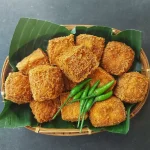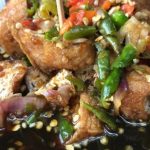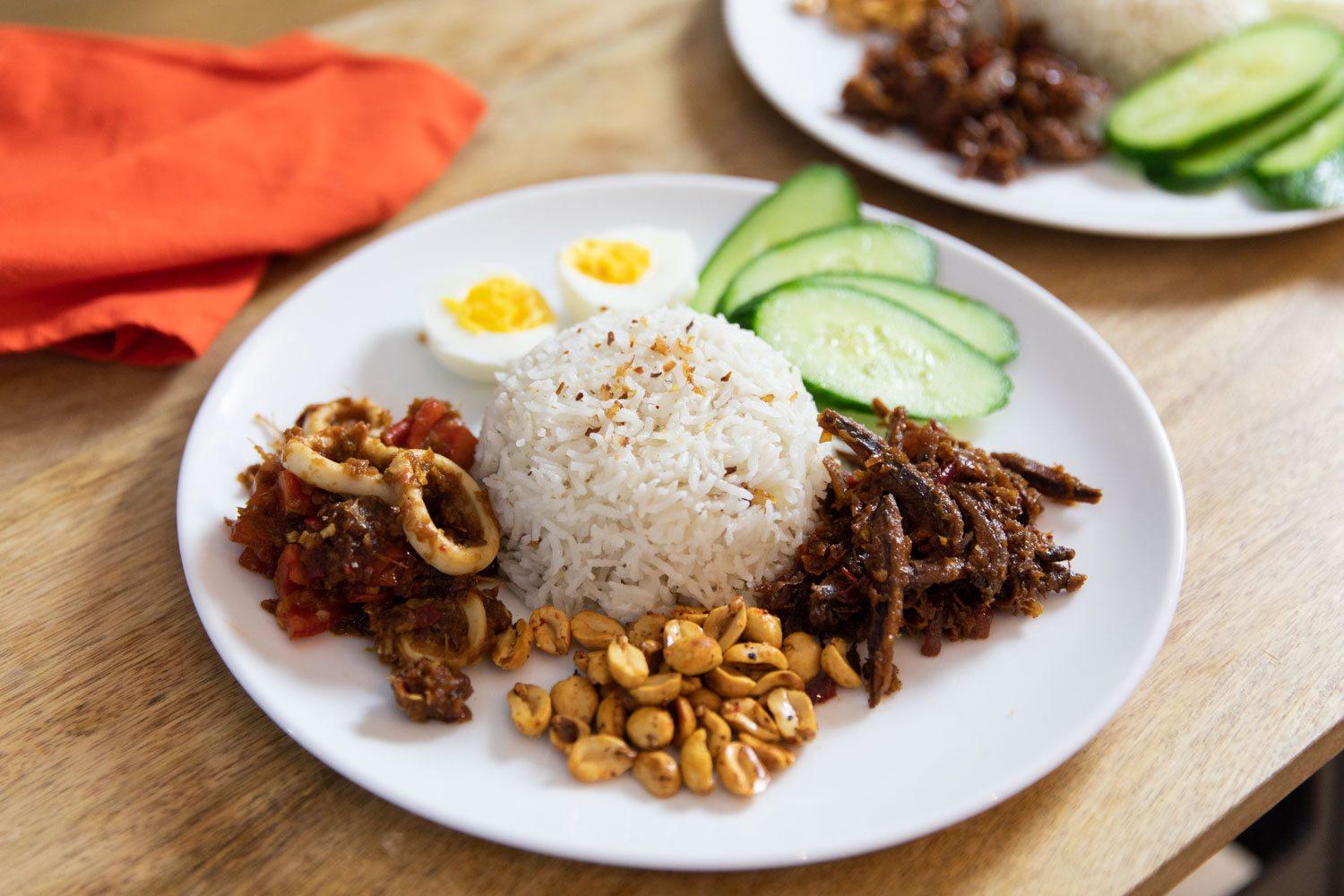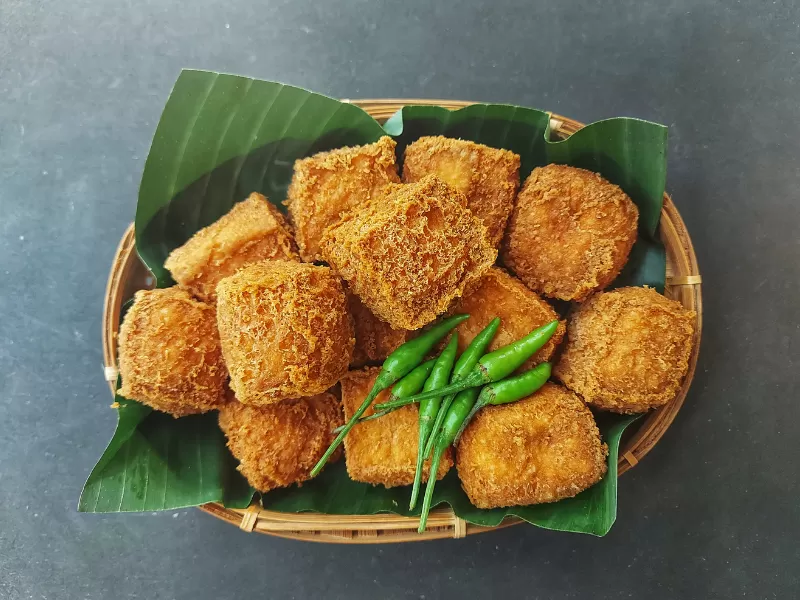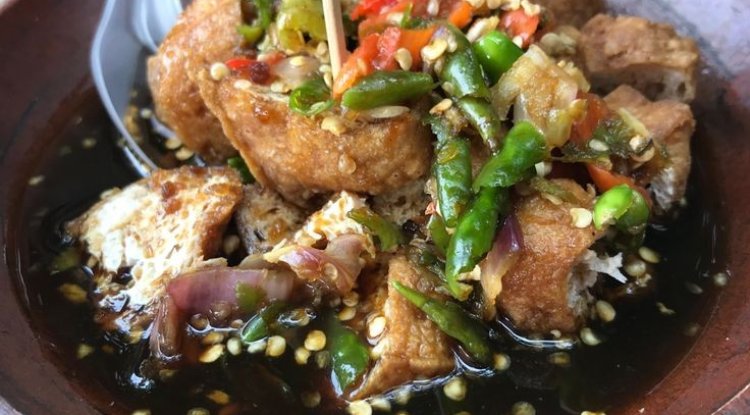Nasi lemak pandan sambal sotong is a beloved Malaysian dish that exemplifies the rich culinary heritage of the region. Combining fragrant rice infused with pandan leaves, a spicy and tangy sambal sotong (squid), and an array of traditional accompaniments, this dish offers a harmonious blend of flavors and textures. Its popularity extends beyond Malaysia, appreciated by food enthusiasts around Southeast Asia and beyond for its comforting aroma and vibrant taste. As a staple in Malaysian cuisine, nasi lemak pandan sambal sotong is more than just a meal; it is a cultural experience that reflects the country’s diverse culinary influences and love for bold flavors. Exploring the various aspects of this dish reveals the artistry involved in its preparation and the significance it holds in Malaysian food culture.
The Aromatic Fragrance of Pandan in Nasi Lemak Preparation
Pandan leaves, often referred to as the "vanilla of Southeast Asia," are integral to creating the distinctive aroma of nasi lemak. Their sweet, floral fragrance elevates the rice, imparting a subtle yet memorable scent that enhances the overall sensory experience. When pandan leaves are tied into knots and cooked with rice, their natural oils seep into the grains, infusing them with a gentle aroma that is both soothing and enticing. This aromatic infusion not only adds depth to the dish but also symbolizes freshness and natural flavoring in Malaysian cooking.
The process of incorporating pandan into nasi lemak involves more than just boiling the leaves with rice; it requires careful selection of fresh pandan leaves to ensure maximum fragrance. The leaves are often bruised or blended to release their essential oils before being added to the cooking water. Some cooks also use pandan extract for convenience, though fresh leaves are preferred for their authentic aroma. The result is a visually appealing, fragrant rice that serves as a perfect base for the accompanying spicy, savory, and tangy components of the dish.
Pandan’s aroma complements the richness of coconut milk used in cooking the rice, creating a balanced sensory profile. The floral scent pairs beautifully with the creamy texture of the rice, making each bite a delightful experience. Additionally, pandan leaves are believed to have calming properties, adding a subtle layer of wellness to the dish. Overall, the fragrant aroma of pandan is a defining feature that elevates nasi lemak from simple comfort food to a culinary delight.
In Malaysian households and street food stalls, the aroma of pandan-infused rice signals a hearty, well-prepared meal. It evokes a sense of nostalgia and cultural pride, reminding Malaysians of their culinary roots. The fragrant pandan rice is often the first component to be served, setting the tone for the flavorful journey that follows with each accompanying dish. Its aromatic presence is a testament to the importance of natural ingredients and traditional techniques in Malaysian cuisine.
The use of pandan in nasi lemak showcases the skillful integration of fragrance and flavor, highlighting the significance of sensory appeal in Malaysian cooking. This aromatic element not only pleases the palate but also creates an inviting atmosphere, making the dining experience memorable. As a symbol of authenticity, pandan-infused rice remains a cornerstone of nasi lemak preparation and a beloved feature of Malaysian culinary artistry.
Key Ingredients and Their Role in Crafting Authentic Nasi Lemak
Creating authentic nasi lemak pandan sambal sotong requires a careful selection of ingredients that work in harmony to produce its signature taste. The core components include fragrant jasmine rice, coconut milk, pandan leaves, anchovies, peanuts, boiled eggs, and the star of the dish—sambal sotong. Each ingredient plays a vital role, contributing unique textures and flavors that define the dish’s character.
Jasmine rice, known for its fragrant aroma and fluffy texture, forms the foundation of nasi lemak. When cooked with coconut milk and pandan leaves, it becomes rich, aromatic, and slightly creamy, providing a perfect base for the accompanying spicy and savory components. Coconut milk is essential, adding a luscious, smooth mouthfeel and a subtle sweetness that balances the heat of the sambal and the saltiness of the other ingredients.
Sambal sotong is the highlight of this dish, featuring tender squid cooked in a spicy, tangy chili paste. The key to an authentic sambal sotong lies in fresh ingredients such as red chilies, shallots, garlic, tamarind, and shrimp paste, which combine to produce a complex, fiery flavor. The squid is typically cleaned, sliced, and simmered until tender, absorbing the bold flavors of the sambal. Its chewy texture complements the softness of the rice and adds a delightful contrast.
Additional ingredients like crispy fried anchovies, roasted peanuts, and hard-boiled eggs serve as traditional accompaniments, enhancing the dish’s texture and nutritional value. These elements provide saltiness, crunch, and protein, making nasi lemak a satisfying and well-rounded meal. Sometimes, sliced cucumbers are added for freshness and relief from the spiciness, completing the ensemble.
The harmony of these key ingredients reflects the culinary ingenuity of Malaysian cooks, who masterfully balance flavors—spicy, sweet, salty, and umami—in every serving. The quality and freshness of each component are crucial to achieving an authentic taste that resonates with both locals and visitors. This carefully curated selection of ingredients exemplifies the depth and richness of Malaysian cuisine, making nasi lemak pandan sambal sotong a true gastronomic treasure.
Preparing the Perfect Coconut Milk Rice for Nasi Lemak
The preparation of coconut milk rice, or "nasi lemak," is a delicate process that requires attention to detail to achieve the desired fluffy, fragrant texture. The rice is rinsed thoroughly to remove excess starch, then soaked for at least 30 minutes to ensure even cooking. Combining jasmine rice with coconut milk, water, salt, and pandan leaves forms the core mixture that will be cooked to perfection.
Cooking the rice involves a gentle simmer over medium heat, often in a traditional rice cooker or a pot on the stove. The coconut milk must be added in the right proportion—typically about half the volume of rice—to ensure the rice is moist and infused with rich flavor without becoming overly greasy. The pandan leaves are added at this stage to impart their floral aroma into the rice as it cooks, enhancing the overall sensory experience.
Throughout the cooking process, it is crucial to monitor the heat and avoid stirring too frequently, which can break the grains and result in a mushy texture. Once the liquid is absorbed and the rice is tender, it is allowed to rest for a few minutes with the lid closed. This resting period helps the grains to firm up slightly and achieve the perfect fluffy consistency that is characteristic of authentic nasi lemak.
Fluffing the rice gently with a fork or rice paddle before serving ensures that the grains remain separate and light. The aroma of pandan and coconut permeates the air during the final stages of cooking, enticing diners with its inviting scent. Properly prepared coconut milk rice is the heart of nasi lemak, providing a fragrant, creamy, and slightly sweet base that complements the spicy sambal and savory sides.
Mastering this process requires patience and precision, but the result is a bowl of rice that embodies the essence of Malaysian comfort food. The fluffy, aromatic coconut milk rice serves as a canvas for the bold flavors of the sambal sotong, anchovies, peanuts, and eggs, making each bite a harmonious blend of textures and tastes. This meticulous preparation underscores the cultural significance and culinary artistry behind nasi lemak.
Crafting Spicy and Flavorful Sambal Sotong: A Step-by-Step Guide
Creating authentic sambal sotong involves a careful process of blending spices, cooking chili paste, and simmering squid to develop a rich, spicy flavor profile. The foundation begins with fresh ingredients: dried red chilies, shallots, garlic, tamarind paste, shrimp paste (belacan), and lime juice. These components are blended into a smooth chili paste that forms the base of the sambal.
The process starts by frying the shrimp paste in oil until fragrant, followed by sautéing the blended chili mixture until it releases oil and deepens in color. This step is crucial for developing the complex flavors characteristic of Malaysian sambal. The addition of tamarind paste provides a tangy note, balancing the heat and sweetness, while lime juice offers a fresh, zesty finish.
Once the chili paste is ready, cleaned squid is sliced into rings or strips and added to the pan. The squid is cooked in the spicy sauce until tender, allowing the flavors to meld and the sauce to thicken slightly. The key is to avoid overcooking the squid, which can become tough, and to ensure it absorbs the rich, fiery flavors of the sambal.
Throughout the cooking process, adjustments are made to achieve the perfect balance of heat, acidity, and sweetness. Some cooks add a touch of sugar to mellow the spiciness, while others prefer a more fiery approach. The final sambal sotong should be aromatic, slightly sticky, and packed with flavor, with the squid tender and infused with the spicy sauce.
Serving sambal sotong alongside the coconut rice completes the dish, offering a spicy, savory, and slightly tangy taste that is quintessentially Malaysian. The preparation emphasizes the importance of fresh ingredients and precise seasoning, ensuring that each serving delivers the bold flavors that make nasi lemak pandan sambal sotong a truly memorable culinary experience.
The Significance of Sambal Sotong in Malaysian Cuisine
Sambal sotong holds a special place in Malaysian cuisine as a representation of the country’s love for bold, spicy flavors and seafood. Squid is abundant in Malaysian waters, making it a readily available and popular ingredient in many traditional dishes. The spicy sambal coating enhances the natural sweetness of the squid, creating a harmonious balance that appeals to a wide range of palates.
In Malaysian culinary culture, sambal sotong is often associated with festive occasions, street food, and family gatherings. Its vibrant red color and fiery aroma evoke excitement and anticipation at mealtime. The dish exemplifies the use of local ingredients and traditional cooking techniques passed down through generations, reflecting the

